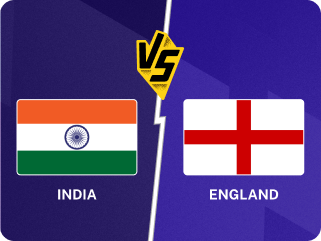
James Wallace examines the politics of pitch preparation in an era when every Test result matters.
Sport is a complex soup. It takes a balance of all sorts of ingredients boiled up and blended together in order to work. If one single ingredient becomes overpowering then this can lead to a disappointing, unsatisfactory taste. Take the 2015 US Open held at Chambers Bay on America’s West Coast, a tournament that went down about as well as a cup of warm gazpacho in a Galician heatwave. The course was roundly criticised by spectators and players alike for being too challenging. Gary Player called it “unplayable”, Henrik Stenson memorably described the bumpy greens as like “putting on broccoli”, the great and good of golf lining up to pour scorn on the course and the USPGA for designing it to be so tricky.
The overwhelming feeling was that the conditions actually overrode any of the nuance of the sport and rendered the skills of the players to be largely redundant. The world’s best reduced to ingloriously hacking it out like rank amateurs. Whilst there may have been some twisted pleasure in seeing these gods of the game reduced to mere mortals, after a while the spectacle loses its grim fascination and becomes tedious.
Cricket, perhaps more than any other sport is dominated by different conditions of play, with much of the tactics, analysis and commentary around the game based on musings that stretch from the sky to the soil. When the balance is tipped too far in favour of one discipline or another it loses a key part of what makes it so special.
The third Test between England and India at Ahmedabad was all over inside two days, England bundled out twice and India once on a very challenging wicket. The match unfolded in such a harum-scarum fashion as to be at first electrifying but then inevitably resulting in much hand wringing about the state of the pitch and subsequently the state of the game in its ‘purest’ format.
Both sides could have batted better on it but the pitch was bad, the wicket behaving on day two as you would expect a day four or five pitch to behave. As at Chambers Bay in 2015, the surface became too strong a factor too soon and reduced some of the best players in the world to look ordinary and in some cases, completely clueless. Any initial glee soon gave way to the realisation that this five-day Test was coming to an end and there were three long lockdown days of prime-time and free-to-air cricket being snatched away.
Test cricket is at its most riveting, undulating and intriguing best when there is a build up to the final day’s play, when the surface really starts to reveal itself and assert a more direct role in the outcome. The to-and-fro of both sides trying to outwit and outperform each other in order to ‘set up’ the game for its final acts is what sets it apart from the shorter formats of itself and most other sports. The test of technique and skills, the slow-burn scrutiny, physical and mental endurance, the sheer bloody hard work required to win a Test match are what make the wins feel more special and the losses more abject. The pitch in Ahmedabad was a bad one because it deprived us of that.
With a World Test Championship final spot up for grabs and with India being beaten quite convincingly by England in the first Test, a change of track was needed. The groundsman who curated the first pitch in Chennai was ‘dismissed’ and duly served up were a couple of spinning tops, with the likelihood of another to follow in the final match.
India won comfortably and eliminated any hope of England reaching the WTC final but also of having any chance of winning the series. India’s captain also, somewhat deliciously, claimed in his post-match interview that the pitch was, “very good to bat on” before adding for good measure, “especially in the first innings”.
It does beg the question; do players and teams have too much power over the conditions that are ultimately served up? With every Test being allocated points as part of the WTC there are no longer any dead rubbers; every game has a value wider than just that of the series at the time. This might lead to teams curating wickets in their home countries that are too far stacked one way in order to give them the best chance of a result, even if it means a Test match runs to nowhere near five days or requires a completely different set of skills that were previously anathema to the fundamentals of Test cricket (batters scoring quickly from the get-go before a ball which ‘has your name on’ gets you rather than the virtues of patience and prudent decision making, for example).
It’s a struggle to think of any other sport where this sort of thing is allowed to happen. Roger Federer, worried about slipping out of the ‘Big Four’ isn’t able to order his team to sprinkle some grass seed on the clay courts of Roland Garros on the eve of the French Open so as to give himself a better chance of winning. A big-lunged cyclist in the Tour de France doesn’t have the power to exert influence over the cartography of the course to incorporate more mountains to better burn off his fellow riders just as a golfer more skilled at putting can’t pre-order the greens to be greased in order to make it harder for those less able with putter in hand.
So abject was England’s loss that Joe Root could be forgiven for instructing the groundsman back home to serve up five pitches in the summer that are greener than a goblin’s nob. England could then drown out their troubles with spin from the first half of the year with a sea of seamer friendly pitches that are almost as alien to India’s batsmen. That’s the temptation, as it stands it would be perfectly legal and the pitches would have to be really biased in order to run any risk of sanctions.
These tit-for-tat ‘turf wars’ will lead to one-sided and ultimately less interesting games but could well become the norm in future unless the ICC decides to step in and take a firmer hand on pitch regulation. One option is an elite panel of pitch curators that travel the globe to independently prepare the grounds, a ‘have pitchfork, will travel’ crew that is closer to mimicking the way that international umpiring has gone. This might be hard in reality with so much dependent on local knowledge, of weather, soil and other environmental and atmospheric factors at play. Far easier to step in when a pitch is clearly not balanced enough and dock WTC points from a side rather than fudging the issue with other less relevant penalties.
I suspect that most (apart from the most loyal, or one-eyed of cricket lovers) can hand on heart say that they care less about which team triumphs than whether it was a good contest and the spectacle was worthy of the tag of being Test cricket. What happened in Ahmedabad was of course exciting and at times fascinating but it was all over too soon. A pot of sweets gobbled up greedily in one sitting to leave behind a residual feeling of emptiness, of malnourishment by the most nutritious of games.
Which leads us back to the whole ‘sport is a soup’ stuff… Test cricket is a more complex broth than most, it only takes a heavy hand with one of the ingredients to set the whole delicious concoction out of kilter. It requires work to keep it all balanced, to keep it satisfying. Otherwise it runs the risk of losing its subtle flavour and of ultimately being sent back to be replaced by something else.








